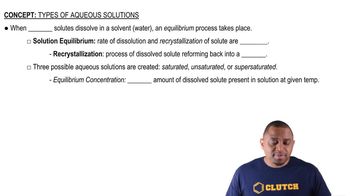Textbook Question
Consider the following unbalanced oxidation-reduction reactions in aqueous solution: Ag+1aq2 + Li1s2¡ Ag1s2 + Li+1aq2 Fe1s2 + Na+1aq2¡ Fe2 + 1aq2 + Na1s2 K1s2 + H2O1l2¡ KOH1aq2 + H21g2 (a) Balance third reaction.
609
views




Consider the following unbalanced oxidation-reduction reactions in aqueous solution: Ag+1aq2 + Li1s2¡ Ag1s2 + Li+1aq2 Fe1s2 + Na+1aq2¡ Fe2 + 1aq2 + Na1s2 K1s2 + H2O1l2¡ KOH1aq2 + H21g2 (a) Balance third reaction.
Two positively charged spheres, each with a charge of 2.0⨉10-5 C, a mass of 1.0 kg, and separated by a distance of 1.0 cm, are held in place on a frictionless track. (a) What is the electrostatic potential energy of this system?
The accompanying photo shows a pipevine swallowtail caterpillar climbing up a twig. (a) As the caterpillar climbs, its potential energy is increasing. What source of energy has been used to effect this change in potential energy?